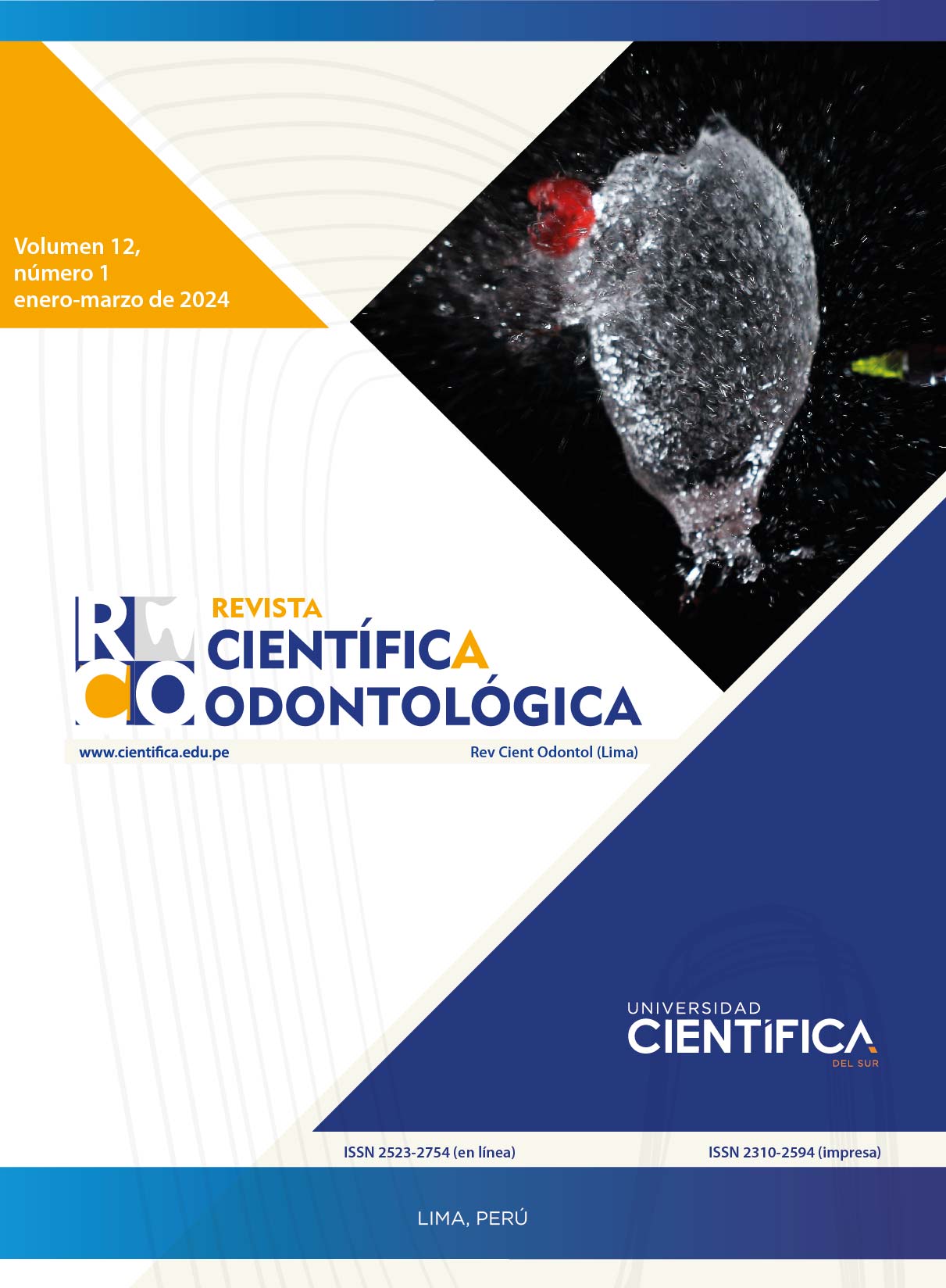Compressive stress in three types of finishing lines with lithium disilicate crowns in permanent teeth: finite element analysis
DOI:
https://doi.org/10.21142/2523-2754-1201-2024-182Keywords:
lithium disilicate, finished line, finite elementAbstract
Introduction: In oral rehabilitation, the use of ceramic restorations is widely accepted due to its aesthetic capacity to mimic the naturalness of the dental tissue, provide longevity of the material, and present a greater marginal fit compared to crowns with a metal structure. Termination lines are biological preparations whose function is to minimize the cervical opening of the marginal seal. Consequently, analyzing the behavior of restorative materials under compressive forces decreases the risk of fracture and increases the success of the treatment. Objective: To compare the compressive stresses of lithium disilicate crowns with three different finishing lines. Methodology: In silico study of the simulation of a dental preparation on a lower right first molar with chamfer (0.6 mm), shoulder (0.5 mm) and deep chamfer (0.5 mm) finish lines. Using the SolidWorks®️ version 2017 software, the maximum stresses, minimum stresses, and location of the compressive force were collected on the Megapascal (Mpa) measurement scale. Results: The chamfer type termination line (0.6mm) obtained a lower compressive stress compared to the other two shoulder type termination lines (0.5mm) and deep chamfer (0.5mm). Conclusions: It was shown that the chamfer type finishing line (0.6mm) presented a better force distribution, determining greater reliability in the selection of this finishing line with the use of a lithium disilicate crown in a unitary manner.
Downloads
Downloads
Published
Issue
Section
License
Copyright (c) 2024 Joshua Yanapa Márquez, Martín Andrés Chávez-Méndez

This work is licensed under a Creative Commons Attribution 4.0 International License.

Este obra está bajo una licencia de Creative Commons Reconocimiento 4.0 Internacional.












